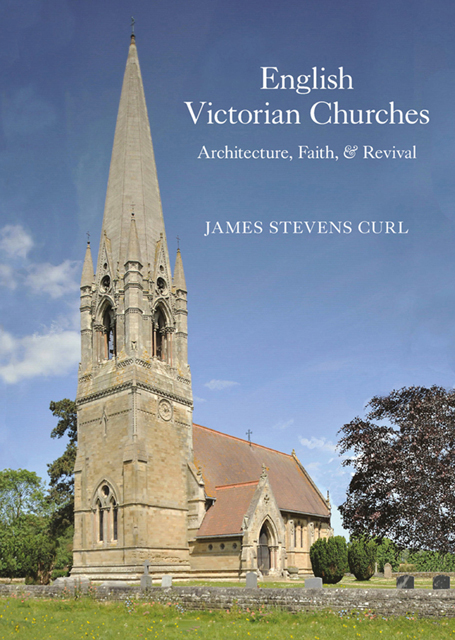Book contents
- Frontmatter
- Dedication
- Contents
- Foreword by Barry Orford
- Preface and Acknowledgements
- Note on Illustrations
- 1 An Introduction to Denominations and Victorian Churches
- 2 Architecture, Antiquarianism, and Styles
- 3 The Religious Atmosphere in the 1830s and 1840s
- 4 Recusants, Goths, Converts, Ultramontanes, and Controversies
- 5 The Anglican Revival
- 6 The Search for an Ideal
- 7 Church Architecture of the 1850s, 1860s, and Early 1870s
- 8 The Late Victorian Anglican Church in Several Manifestations
- 9 Non-Anglican Buildings for Religious Observance
- 10 Epilogue
- Select Glossary
- Select Bibliography
- Index
Foreword by Barry Orford
Published online by Cambridge University Press: 08 June 2023
- Frontmatter
- Dedication
- Contents
- Foreword by Barry Orford
- Preface and Acknowledgements
- Note on Illustrations
- 1 An Introduction to Denominations and Victorian Churches
- 2 Architecture, Antiquarianism, and Styles
- 3 The Religious Atmosphere in the 1830s and 1840s
- 4 Recusants, Goths, Converts, Ultramontanes, and Controversies
- 5 The Anglican Revival
- 6 The Search for an Ideal
- 7 Church Architecture of the 1850s, 1860s, and Early 1870s
- 8 The Late Victorian Anglican Church in Several Manifestations
- 9 Non-Anglican Buildings for Religious Observance
- 10 Epilogue
- Select Glossary
- Select Bibliography
- Index
Summary
‘Oh, a horrible pompous thing,’ [the Vicar] said; ‘it was behind the altar – most pagan and unsuitable … The first moment I entered the church, I said to myself, “that must go,” and I have succeeded, though it was hard enough to collect the money, and actually some of the old people here objected.’
Arthur Christopher Benson (1862–1925): The Upton Letters (London: Smith, Elder, & Co., 1906), 60.English churches have frequently been unfortunate. They have endured the attacks of foreign foes, from the Vikings to the Luftwaffe, and have suffered the ravages of home-grown destroyers. The tales of post-Reformation vandals fervidly obliterating signs of ‘superstition’ are painful, and the Puritans’ religious fanaticism wreaked further damage. Ignorant zeal has greatly harmed our ecclesiastical inheritance, and, in the 20th and 21st centuries, Victorian buildings have been particular targets for misguided adaptation or demolition.
It must be admitted that the Victorians, riding a wave of confident, mission-minded enthusiasm, built an excessively large number of places of worship. Many could not foresee that the forces which would remove the Church from its central place in society were growing even as they built, although some, more perspicacious, were acutely aware that great changes lay ahead. Superfluous to requirements today, these forlorn shells invite a superficial view that Victorian work is dispensable.
This book provides the material for preventing such continuing disregard for the surviving fabric entrusted to us. Professor Curl helps us to understand both why and how the Victorians built as they did. He charts the remarkable stylistic shifts characterising ecclesiastical architecture of the time, and suggests why great designers and restorers such as G.G. Scott, Butterfield, Burges, Street, Pearson, Bodley, and Temple Moore really are great, and why their works, and those of lesser-known names, deserve our care, appreciation, and gratitude. Readers of this fine book will have their eyes opened to the glories (sometimes extravagant ones) which await attention even in small buildings in out-of-the-way locations.
The story of Victorian ecclesiastical architecture is inseparable from that of the Oxford Movement, which awakened the Church of England to an awareness of its Catholic roots. Professor Curl is right to remind us of the honour due to generous benefactors, inspired by Tractarian ideals, who paid for new churches, especially those which brought faith, hope, and colour to some of the worst areas of burgeoning Victorian cities.
- Type
- Chapter
- Information
- English Victorian ChurchesArchitecture, Faith, and Revival, pp. ix - xPublisher: Boydell & BrewerPrint publication year: 2022



